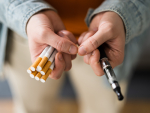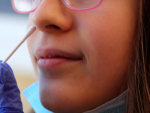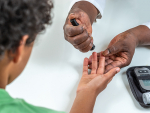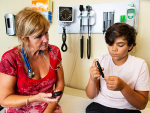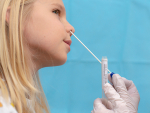Displaying items by tag: department of health care policy and organization
E-cigarette use among college-age students has drastically increased. UAB researchers studied the perception of health risks of e-cigarettes compared to traditional cigarettes.
Tagged under
The postpartum awareness bracelets will serve as medical alert bracelets and reminders for postpartum women to prioritize their own health.
Tagged under
Launched during the Delta surge, the UAB-led program aimed to keep Alabama’s school open for in-person instruction through free and voluntary services such as asymptomatic testing and HEPA filters.
Tagged under
New study indicates that StreetBit has the potential to save millions of dollars annually and reduce pedestrian injuries by implementing such programs on a larger scale.
Tagged under
UAB is one of 15 sites selected by the NIH to study the increasing prevalence of diabetes in youth, specifically in Black and Hispanic minority groups.
Tagged under
- release
- school of medicine
- oneal comprehensive cancer center
- school of health professions
- department of nutrition sciences
- diabetes research center
- school of public health
- department of biostatistics
- department of health care policy and organization
- public health research
- college of arts and sciences
- department of psychology
Most discussions about climate change focus on infectious diseases or water- and heat-related disasters. Learn how climate change also affects the inequity in maternal and child health through a UAB School of Public Health webinar Feb. 16.
Tagged under
Published findings from UAB suggest that certain firearm laws in one state were associated with other states’ firearm-related deaths. Additionally, permit-to-purchase laws were associated with decreased firearm-related death rates both within a state and nearby states.
Tagged under
The Alabama Maternal Health Task Force will lead state entities, community members and maternal health experts in developing and implementing a strategic plan aimed at reducing maternal mortality and morbidity across the state.
Published results suggest the COVID-19 pandemic exacerbated the slow increase in pediatric Type 2 diabetes.
Tagged under
Alabama K-12 public and private schools now have the option to receive asymptomatic COVID-19 testing, high-efficiency particulate — or HEPA —air purifiers, over-the-counter test kits, on-site liaisons and more through the UAB School of Public Health program.
Tagged under
The World Refugee Day Simulation offers an immersive experience and concrete steps to take action. UAB graduate student Agok Ayuen, who grew up in a refugee camp in Kenya and is now training in the School of Public Health, is helping to organize the event.
Tagged under
More adolescents and young adults in the U.S. vape cannabis instead of nicotine, contradicting widely held beliefs of nicotine consumption in vaping.
Throughout 2020, the decline in pediatric emergency department visits among Black and public or self-insured patients was consistently larger than other demographics.
Tagged under
Bianca and Kelvin Ume have been pulling double duty throughout the pandemic: working as contact tracers while juggling full-time jobs, Bianca as a UAB medical and MBA student and Kelvin as an ICU nurse.
Tagged under
UAB public health researcher suggests new framework in tracking tobacco and nicotine use in adolescents in the United States.
Tagged under
UAB will partner with the Alabama Department of Public Health, Alabama State Department of Education and local school districts to conduct individualized COVID-19 testing plans. The testing is free, voluntary and safe.
Tagged under
Bisakha Sen, Ph.D., will work with leading health scientists to review the results of a study on how service dogs and emotional support dogs help veterans with PTSD.
Students at UAB are helping with contact tracing by letting people in Alabama know if they have been diagnosed with COVID-19.
Tagged under
Investigators are developing a telemedicine program to reduce vaccine hesitancy related to HPV and the novel coronavirus for adolescents in rural Alabama.
Tagged under
Failing to account for weaker firearm laws in neighboring states made it falsely appear that a states’ laws were about 20 percent less effective in reducing firearm deaths.
